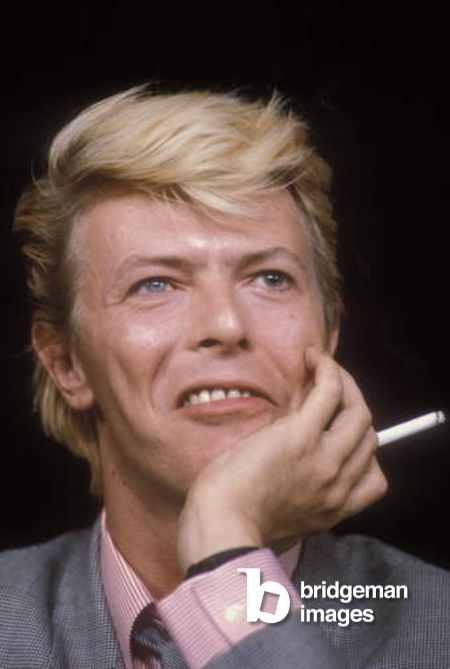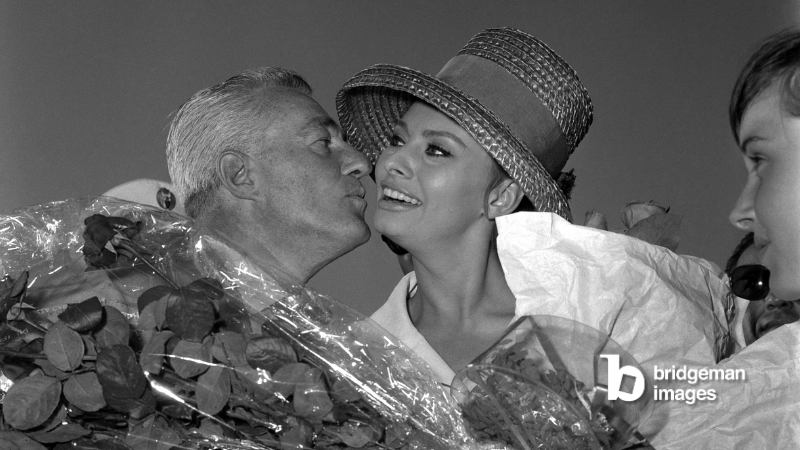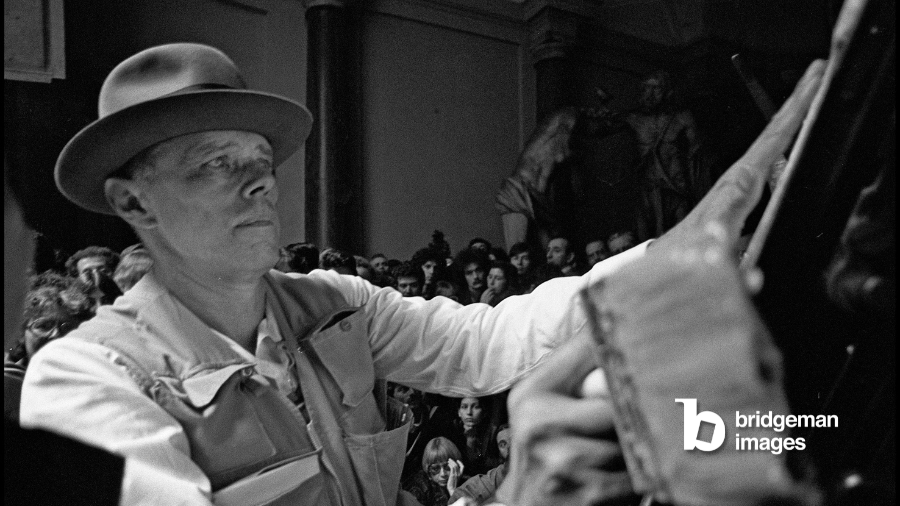Published 25/09/2023
Bridgeman Images had the pleasure of meeting Marcello Mencarini, renowned Italian photographer, journalist and videographer for an interview. Through this stimulating conversation, we were able to explore Mencarini's multiple contributions in the world of visual art and media.
Explore all photographs by Marcello Mencarini
1. How did you develop your passion for photography and how did your career as a photographer evolve?
Since I was young, I have had an interest in photography which was further stimulated by the incisive impact of the film "Blow-Up". My involvement grew further after a trip to London where I had the opportunity to explore several advertising studios.
In the '70s I then played the role of Art Director and photographer at a photographic studio dedicated to advertising, of which I was also a partner: it was the Freelance Photo agency. In 1979 I took the step towards social photography and reportage, starting a long collaboration as a photojournalist for the weekly "L'Espresso". From 1988 to 1994, I was part of the photographic staff of "Radiocorriere TV", the weekly of RAI, the Italian public radio and television. In this role, I worked as a correspondent in various countries of the world, capturing moments of political relevance and news, but also specialising in portraiture, especially of artists, classical musicians and writers. A significant work of those years was the creation of a series of photographs focused on the most influential contemporary composers, with which I documented the creative process of prominent authors such as Luciano Berio, Giuseppe Sinopoli, John Cage and Karlheinz Stockhausen.
In 1984 I established a collaboration with the Grazia Neri agency. In the mid-1990s, coinciding with the rise of the internet and the digital age, I began to explore new media and related image languages. In 1995, together with Graziano Arici and Francesco Gorup de Besanez, I founded Rosebud: an innovative photographic agency specialised in the distribution of images in digital format, the first in Italy in this sector.
A particularly relevant moment dates back to 1995, during the 52nd Venice Film Festival, when I was the first photographer in Italy to make a reportage entirely with a digital camera, the Canon EOS DCS3.
.png)
In 2001 I broadened my work experience by becoming a video journalist for the Corriere della Sera website. I have covered major events such as the Cannes Film Festival, the Venice Film Festival and the G8 in Genoa, conducting interviews and developing new formats.
From 2002 to 2007, I held the position of director of Emage, the multimedia sector of the Grazia Neri agency, experimenting with innovative formulas based on user participation. In 2002, together with Michele Neri, I created Makadam, a pioneering project aimed at photographers who use mobile phones, including a website, a free press magazine fed by users' photos and even a web TV with video content recorded by subscribers, all done via mobile phone, years before the advent of platforms like Flickr, Facebook (which arrived in 2004) and YouTube (in 2005).
Another milestone was reached in 2002, at the 59th Venice Film Festival, when I produced the world's first professional reportage shot entirely on a camera phone, in collaboration with Nokia and Vodafone.
In 2005, in collaboration with Barbara Seghezzi, I conceived, wrote and directed the documentary "Nuovi comizi d'amore" (in English "New Love Meetings"), a tribute to "Comizi d'amore" by Pier Paolo Pasolini. This film, an analysis of the nuances of Italian sexuality, was shot entirely with the camera of a Nokia N90 mobile phone, marking a new chapter in my career. The documentary has been screened in important contexts, including the MoMA in New York in 2008, during the Documentary Fortnight festival, the Zurich Film Festival 2006 and the IDFA in Amsterdam 2006.
In 2012 I created the photojournalistic agency "Rosebud2", specialised in portraits of personalities and events related to the world of culture, of which I still hold the role of director. In 2014, I broadened my scope by opening the MaMoGallery exhibition space in Arles, France, where I curated exhibitions and events, as well as leading photography workshops. Since 2019 I have been the artistic director of Todimmagina, a contemporary photography festival held in Todi (PG). Also in Todi, I organised the exhibition "Rino Barillari. A life as a paparazzo: Italy from the Dolce Vita to today seen through the eyes of a reporter" (May 14-23, 2021).
In 2020 I completed the book project "Photographers in quarantine", a collection of images taken by various photographers during the Covid-19 pandemic. These same photos were the subject of an exhibition during Todimmagina 2021. In the same year I wrote "La dolce vita dei paparazzi": an in-depth, accurate historical and critical investigation of the paparazzi who acted x in Rome in the 1950s and 1960s, the era of the Dolce Vita and the so-called "Hollywood on the Tiber". In this book appear the names of the protagonist photographers of that period; their techniques and equipment; some reflections on how this difficult profession is practiced today and a reasoned plot of the film "La dolce vita", with an analysis of the role given by Fellini to current photographers. The volume includes a series of rare interviews with still living photographers of the time or with their heirs: Maria Alexis, Sergio Alocci, Luciano Amendola, Rino Barillari, Alessandro Canestrelli Jr., Marco Geppetti, Salvatore Giansiracusa, Enrico Lucherini, Andrea Nemiz, Sara Pastore, Gilberto Petrucci, Carlo Riccardi, Marcello Rosa, David Secchiaroli, Maria Sorci, Damiano Tridici, Elio Vergati.
I maintain a constant commitment to give lectures and workshops on photography. In particular, from 2011 to today, every year I lead a workshop on stage photography at the Accademia della Scala in Milan, entitled "In theater as in war". A part of my analogue photographs is kept at MuFoCo, the Museum of Contemporary Photography in Cinisello Balsamo, as part of the Agenzia Grazia Neri fund.

2. Can you tell us the story of the “Valigia Romana”(Roman Suitcase)?
In the 1980s, in the Porta Portese market in Rome, I made a fascinating find: an old suitcase destined to be forgotten. Inside this old case, were a shattered desk lamp, a light meter, 1950s magazines, and a treasure trove of some 500 black-and-white negatives. The vast majority were 6x6 format, with a small amount of 35mm shots.
Leafing through those photographs, I realised that the suitcase concealed valuable images, an authentic visual fresco of the 50s and 60s in Rome; The era of the Dolce Vita. Through the lenses of an anonymous eye behind the camera, I could relive that golden period through the images of actors, politicians, writers: iconic faces such as those of Sophia Loren, Palmiro Togliatti, Nilde Iotti, Charlie Chaplin, Audrey Hepburn, Marlene Dietrich, Juliette Gréco, Jean-Paul Sartre, David Niven, Igor Stravinsky, Federico Fellini.
Given the value of that material, I undertook to restore the negatives, preserving their fragility, and then proceed with their digitisation and cataloguing. While the identity of the author remained unknown, the style and access to the places portrayed brought out evidence that he was a skilled professional.
The images from that suitcase have been exhibited in various exhibitions. This precious testimony has gone through exhibition spaces in Arles, Prague and Bratislava, and has also enjoyed the recognition of Italian cultural institutions. In November 2021, it was exhibited in a dedicated section at the Bulgari boutique in via Condotti.

3. There are many influential figures in the worlds of culture and entertainment throughout your archive. Among those memories, is there one that stands out in particular?
It was 1982 when I had the opportunity to photograph John Cage for the first time. We were in Venice at the end of September. John Cage was taking part in the International Festival of Contemporary Music and I joined him at the hotel to take some shots. I found him sitting on the bed in his hotel room, a traveling chess set resting on his knees. We started talking about chess, discovering that it was a common passion, and that was the first photo.
The following year, in 1983, we met again in Rome. I had brought with me a copy of the photograph I had taken in Venice. I showed it to Cage, and his face lit up with a childish smile. He took the photo and held it above his head like a trophy. His joy was contagious, and as I took that photo, I felt like I was capturing something special, not just her face.
Ten years later, in 1992, I returned to photograph John Cage, this time in Perugia. I carried with me the photograph taken in Rome, the one in which he smiled while holding the photo of Venice. It was as if we had created a sort of photographic 'mise en abyme', a play of mirrors that reflected our connectedness and taste for the creative process. In the photograph of Perugia, Cage was holding the photo of Rome, and that moment seemed to capture the very essence of the portrait and its elusiveness.
He told me that we would continue our game whenever we met. Sadly, a few months later, John Cage died. But the photographs we created together remained as a testament to that unique connection. Over the years, I've taken many more photographs of extraordinary people, but John Cage's still holds a special place in my head.

4. In addition to your career as a photographer, what projects have you developed over the years?
Many. I have been and am a journalist, video maker, curator of exhibitions, I have held conferences and taught courses. I have written books, especially "La dolce vita dei paparazzi" which I have already mentioned. Other projects to which I am particularly attached are the film "Nuovi comizi d'amore" which, as I have already said, was the first feature film made entirely with a mobile phone and the documentary. "Art is...", also made with a mobile phone asking the artists who participated in 2007 in the most prestigious exhibitions of contemporary art concomitant in that year - Venice Art Biennale, Kassel Documenta, Skulptur Projekte Münster, Art Basel - what art was for them. Another experiment that I loved to carry out on the same occasion was the "Self-portraits" series, created by asking the artists themselves to shoot themselves with my camera equipped with a remote control, deciding independently, in addition to the moment of shooting, also location, context and framing.
.png)
5. You are originally from Rome but have lived in many other cities, both in Italy and abroad. How did the different places you lived in influence your work?
Very very much. I hate the sea, the mountains and holidays in general, I never go there. I have always tried to travel to carry out work projects, not to be a tourist. I like cities not so much for their monuments as for their daily life. I believe that they are the thing that most interests and stimulates me and for this reason I love living them more than visiting them. I am attracted by the people who live there, by the human landscape that characterizes them. Here in Arles where I live, for example, I created the "Vies au zinc" project, photographing the regular customers of an old neighborhood bar and having their portraits printed in large format come down from above. During the period of the exhibition it was not uncommon to observe these photographs and see the same subjects in the flesh playing cards or drinking a pastis, in an interesting link between the works and real life.

6. The profession and photographic technology have evolved a lot over the years. In your opinion, what is the biggest challenge for a photographer nowadays?
Be open to new technologies. Don't fear them. One day perhaps we will no longer need photographers, writers, painters... but creatives. These will always remain and the medium they use will matter little: the camera, the mobile phone, the paintbrush, the piano or artificial intelligence…
Explore all photographs by Marcello Mencarini



